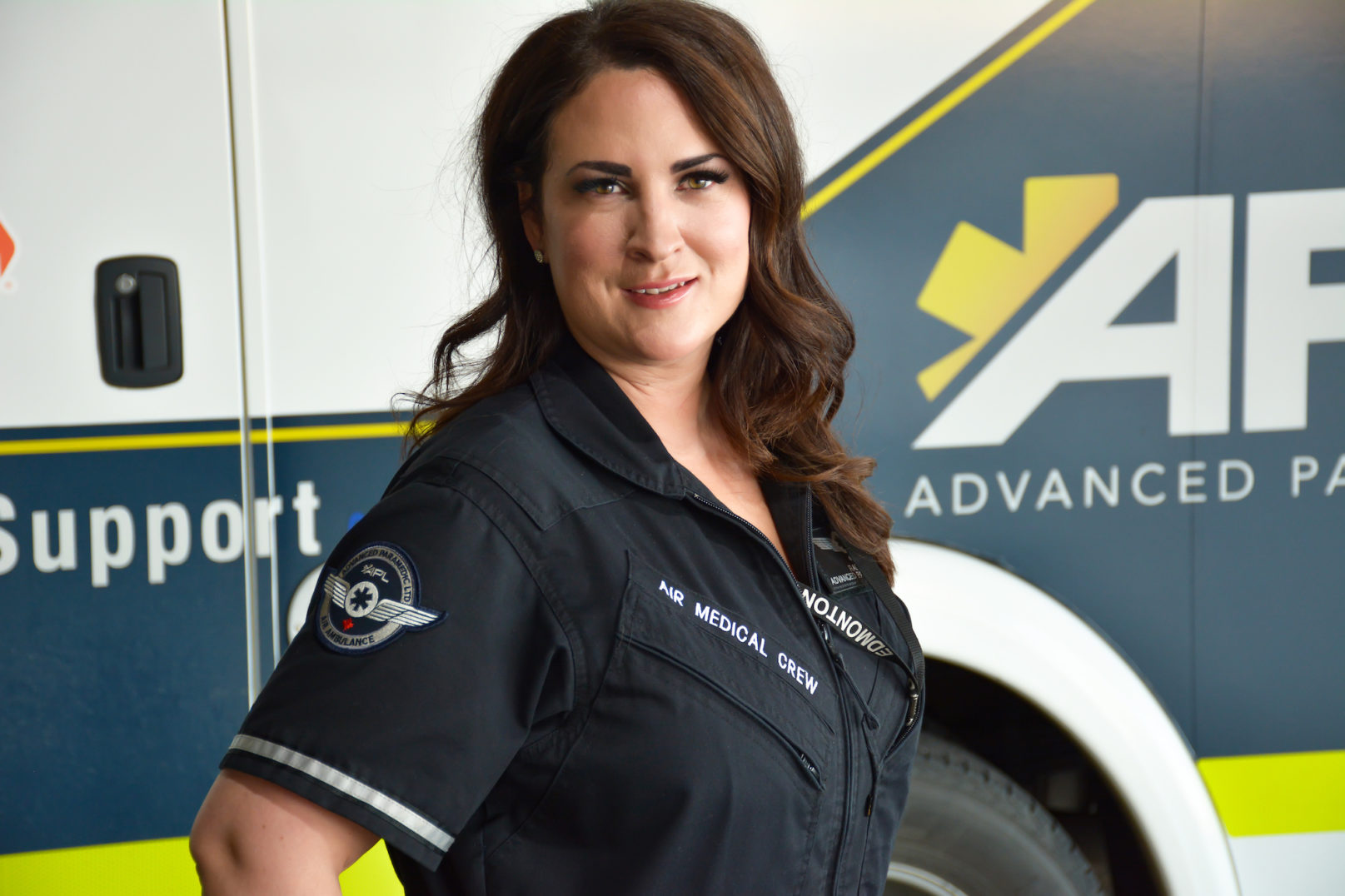
As a teenager, Rachel Zep knew exactly what career path she wanted to follow. While still in high school, she completed the first level of EMS training on weekends, and by the time she was 23, has achieved her ACP certification.
“First I did about 10 years of ground ambulance, then in 2001 I started dabbling in flights,” says Rachel. “By 2005, I was flying full time, and have been doing that ever since. Based in Grande Prairie, we’re the high-acuity aircraft, specializing in transporting critical ICU patients mainly to Edmonton, but also to Calgary or Vancouver, depending on where we’re picking up.”
The team has enough equipment and medication to function as an ICU or emergency department inside new state-of-the-art airplanes with stretcher-capability for two patients plus one person each to accompany them. “Everything a big hospital ICU room would have, we squish into a two-foot by six-foot package–a tiny stretcher with a little pack for their needs. A patient that we’re picking up might have 12 medications with pumps running, but there just isn’t enough space to take everything with us in the plane. We have to prioritize what medications they will be okay without for the next three hours.”
An average day in Rachel’s working life? There isn’t one other
than being ready for the next flight to come in. “When a hospital needs to move a patient, they first get a number of doctors involved to determine the best place for them to go to, the best resource team. Once they decide it’s us, they call our dispatch to arrange the transfer. We notify the pilots where a flight is coming from,
where it’s going, and once the weather’s good at both airports, they let us know. We then contact the hospital for all the details, what equipment is needed, the severity of the patient. The team on duty flies or drives to the hospital and transfers the patient onto the much more compact equipment of the air ambulance.”
Working 24-hour shifts, usually one week on, one week off, each team has either two paramedics or a paramedic and a nurse,
and although their area is physically Grande Prairie, Jasper and Northern B.C., they will fly to wherever they’re needed–in the past as far east as Manitoba, north to the Yukon and the Northwest Territories. The average flight is six hours, but it could be 8 to10 hours or longer for more critical patients.
“We have regular courses, in-house training we need to maintain. We sit down with our doctors to review cases, often doing medical rounds with them where they teach us the latest. Once we’re
at 25,000 feet and a patient has an issue, it’s up to us to make decisions.”
“I love my job and I love flying. Every day in the sky is different, the landscape changing with every season. Every patient is completely different, and I am always learning as medicine changes and more scientific studies come out.”
